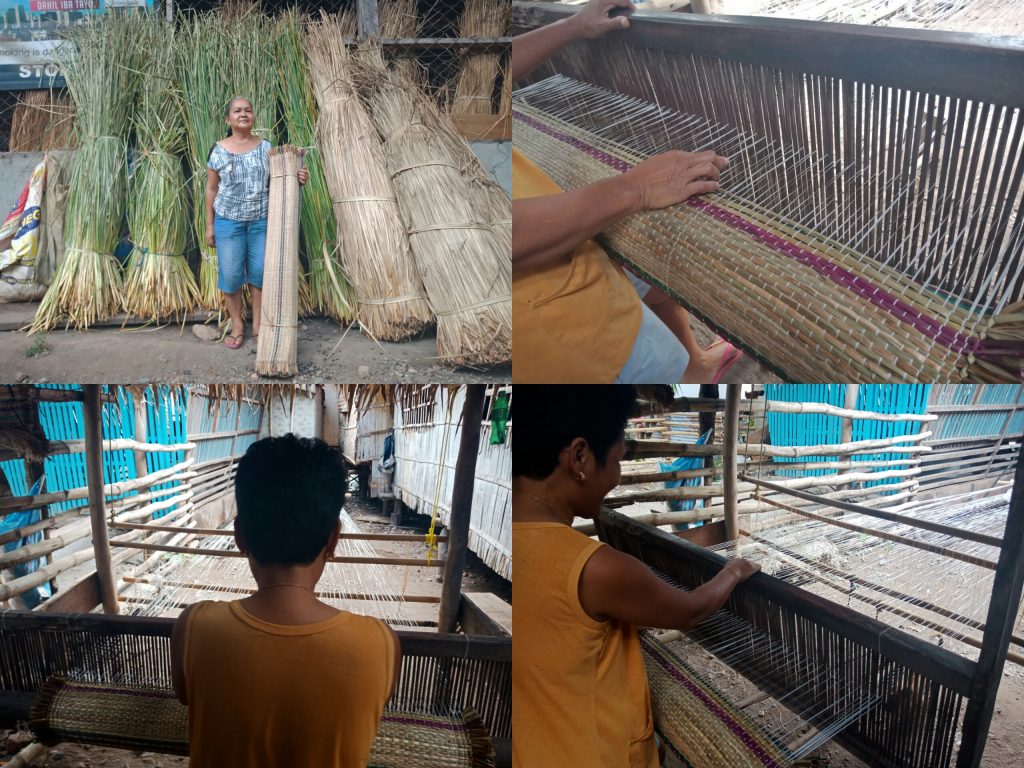‘Banig’ and the women in Mamali

People in the rural areas or provinces in the Philippines mostly use banig (sleeping mats) for sleeping. It may not be as comfortable to others unlike foams or latex mattresses, but it is affordable.
According to the National Commission on Culture and the Arts (NCCA) website, banig is a handwoven mat that was traditionally made in the Philippines. Technically, it is not a textile. Moreover, depending on the region in the Philippines, the mat is made of buri (palm), pandan or sea grass leaves, or native leaves. The leaves are dried, usually dyed, then cut into strips and woven into mats, which may be plain or intricate.
In Mamali, Mati City, women weave banig for a living. Mat-making in Mamali, accordingly, started back in 1970s, although the people in the present generation were not able to trace back its history.
Ofelia Elan, 59, was one of these women weavers. Weaving has been part of her life; a skill that has been passed on from generation to generation.
Ofelia, however, decided to stop weaving because of her age. She opted to use her loan from CARD Bank in buying raw materials and have it done by her neighbors. “I want my neighbors to also experience weaving at the same time earn from it,” she added.
A finished product is sold in the market for PhP100-160, depending on the size. Some people buy in bulk to be sold house to house, while some buy for personal use.
“This is the kind of livelihood that the people in Mamali embraced. Learning how to weave mats is easy if the learner is eager,” Ofelia said.
Indeed, banig is not only for sleeping or sitting. It is the source of livelihood that most women in Mamali depend on for their daily survival. Ofelia clearly knew this fact that is why she always encourage the women in Mamali with CARD Bank’s financial support to continue weaving as a way to contribute towards a more developed community.
CARD Bank, Inc.provides microfinance loans, SME loans, and other loans tailored-fit to the evolving needs of its clients, especially the socio-economically challenged women and families.
